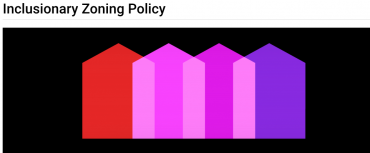
canadiancontractor
Municipal Policies Rooted in Appropriating Private Property
"Social programs, including housing, are the responsibility of taxpayers at large, not the mortgages of new homebuyers."
By Casey Edge
The appropriation of private property is becoming a favourite tool of local politicians demonstrating to the public their concern about housing affordability, the environment and a variety of other hot issues that they have mostly mismanaged.
For example, Toronto is presently developing an “inclusionary housing” policy requiring a percentage of units in new developments meet affordability criteria set by the city. You can find out more and fill out a city questionnaire until July 31 here https://www.toronto.ca/city-government/planning-development/planning-studies-initiatives/inclusionary-zoning-policy/
Victoria recently voted to require 20 per cent of new condo projects over 60 units to be affordable rental. Of course the costs of this subsidy must be absorbed on the mortgages of the 80 per cent new unit purchasers. The costs of production are always paid by the end user. The city’s own consultants reported that 10 per cent was the most that could be expected without harming investment, but council ignored the advice.
Our association has always been very clear regarding these kinds of policies. Social programs, including housing are the responsibility of taxpayers at large, not the mortgages of new homebuyers. CMHC and other government housing agencies have the mandate to fund affordable housing projects including partnerships with developers. In addition, federal, provincial government collect billions of dollars in Property Transfer Tax and GST from new housing to provide these social programs. In fact, Toronto collects more than $1/2 billion in Land Transfer Tax. Saanich, B.C. council has its own version of appropriation called “Natural Saanich.” It’s a new spin-doctored name for the Environmental Development Permit Area (EDPA). Fortunately, the appropriation that was rescinded because it was unfair and too costly for homeowners and builders. “Natural Saanich” sounds as if new housing is somehow “unnatural.”
Victoria struggles with affordability because they have the most costly, obstructive development processes, (a tie with Saanich). The subtext is, vacant land is good and development is bad. The bottom line is this: The Victoria and Saanich initiatives are rooted in government appropriation of private property to achieve agendas creating unfair, negligible results.
On the other hand, Langford, B.C. builds 40 per cent of all new homes and 60 per cent of new rentals in the in the Capital Regional District of Victoria (CRD) because they have the most efficient development processes.
A recent editorial in the Victoria Times Colonist said: “Let’s go all Langford on new development. We know cutting red tape works, after all we have proof just up the highway. But rather than dealing with the obvious problems, council members (here) try to engineer the market to fit their thinking.” https://www.timescolonist.com/opinion/editorials/editorial-victoria-council-s-20-edict-will-discourage-new-housing-1.23872992
Victoria also has a policy of taking 75 per cent of the lift value (ED. NOTE: lift value is the increased value of a property when it is rezoned to allow for more density) in rezoned land. Higher density on land enables costs to be lowered, but Victoria sees this as an opportunity for more city revenue. Of course, they won’t being writing any cheques during the inevitable market downturns. Somehow, they feel they have a right to appropriate private property without taking any of the risk.
View Royal, B.C. council is considering a similar policy, and is giving themselves a pat on the back for a policy that appropriates only 50 per cent of lift value on private land.
Saanich prides itself on its rural roots, so much so that it implemented an EDPA that obstructed housing in the zone established for housing called an urban containment area. If housing is prevented in this area, where will it go? https://www.vrba.ca/protect-housing-in-urban-containment-areas/
Residents opposed the EDPA, so now council is promoting a new version called “Natural Saanich.” It is simply another way of obstructing new housing. Saanich already has strong streamside and wildlife protection, tree protection, and similar regulations for the environment. In fact, their strongest protection is that a new development cannot move forward unless approved by council. Yet, passing new regulations on private property, a form of appropriation, seems to be the preference of elected officials.
What is needed now in the interests of housing supply and affordability is protection from politicians using housing as a cash machine and ignoring private property rights – rights that most homeowners spend a lifetime paying for with mortgages.
Casey Edge is CEO of the Victoria Residential Builders Association and a passionate advocate for the home building industry in Canada.

Leave a Reply